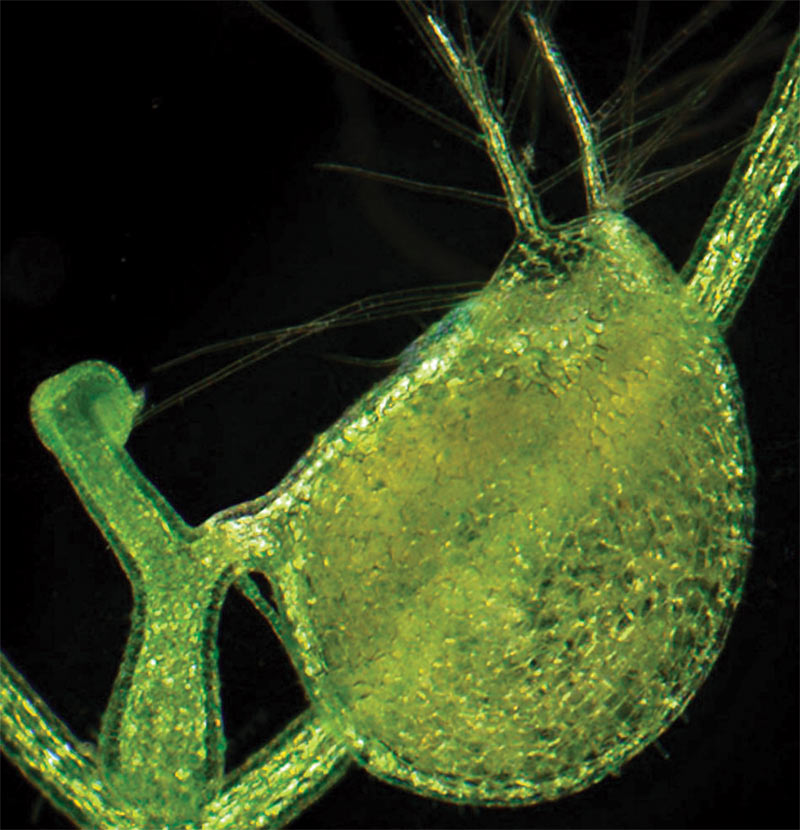
One person's trash may be another person's treasure, but sometimes, trash is just trash.
So-called junk DNA, the vast majority of the genome that doesn't code for proteins, really isn't needed for a healthy organism, according to new research.
"At least for a plant, junk DNA really is just junk — it's not required," said study co-author Victor Albert, a molecular evolutionary biologist at the University of Buffalo in New York.
While the findings, published Sunday (May 12) in the journal Nature, concern a carnivorous plant, they could have implications for the human genome as well. Genes make up only 2 percent of the human genome, and researchers have argued in recent years that the remaining 98 percent may play some hidden, useful role. [Image Gallery: Amazing Carnivorous Plants]
Trash or treasure
For decades, scientists have known that the vast majority of the genome is made up of DNA that doesn't seem to contain genes or turn genes on or off. The thinking went that most of this vast terrain of dark DNA consisted of genetic parasites that copy segments of DNA and paste themselves repeatedly in the genome, or that it consists of the fossils of once useful genes that have now been switched off. Researchers coined the term junk DNA to refer to these areas.
"Nobody's really known what junk DNA does or doesn't do," Albert told LiveScience.
Get the world’s most fascinating discoveries delivered straight to your inbox.
But in recent years, researchers have debated whether "junk" might be a misnomer and if this mysterious DNA might play some role. A massive project called ENCODE, which aimed to uncover the role of the 3.3 billion base pairs, or letters of DNA, in the human genome that don't code for proteins, found that in test tubes, about 80 percent of the genome seemed to have some biological activity, such as affecting whether genes turn on. Whether that translated to any useful or necessary function for humans, however, wasn't resolved.
Lean genome
Albert and his colleagues sequenced the genome of the carnivorous bladderwort plant, Utricularia gibba, which lives in wet soil or fresh water throughout the world and sucks swimming microorganisms into its tiny, 1-milimeter-long bladders.
The genome had just 80 million base pairs. Compared with most other plant species, that genome was positively tiny, Albert said. The lily genome, for instance, can have 40 billion base pairs.
Yet the bladderwort had about 28,500 genes, not much different from plants of similar type and complexity.
The difference was in the junk: The bladderwort plant seemed to have stripped out a vast amount of noncoding DNA. Yet the plant did just fine without that material.
In fact, through a genetic quirk the bladderwort had its entire genome duplicated — meaning the plant got two full copies of the genome — three separate times since it diverged from the tomato. Yet the carnivorous plant somehow retained its tiny genome.
Unnecessary bulk
The findings suggest junk DNA really isn't needed for healthy plants — and that may also hold for other organisms, such as humans.
But it's still a mystery why some organisms have genomes bloated with junk while other genomes are studies in minimalism.
One possibility is that there was some evolutionary pressure to strip the genome of extra material. But that's unlikely given that similar plants with huge genomes don't seem to fare badly, Albert said.
It's more plausible that, by chance, the bladderwort plant has biological processes that favor stripping out extraneous DNA over adding it in, Albert said.
Follow Tia Ghose on Twitter @tiaghose. Follow LiveScience @livescience, Facebook & Google+. Original article on LiveScience.com.

Tia is the editor-in-chief (premium) and was formerly managing editor and senior writer for Live Science. Her work has appeared in Scientific American, Wired.com, Science News and other outlets. She holds a master's degree in bioengineering from the University of Washington, a graduate certificate in science writing from UC Santa Cruz and a bachelor's degree in mechanical engineering from the University of Texas at Austin. Tia was part of a team at the Milwaukee Journal Sentinel that published the Empty Cradles series on preterm births, which won multiple awards, including the 2012 Casey Medal for Meritorious Journalism.



